What is Mind Mapping? What Are Its Uses?
Mind mapping is a powerful technique to help you visually develop and organize ideas and information. Let’s take a look at what mind mapping is and how you can use it.
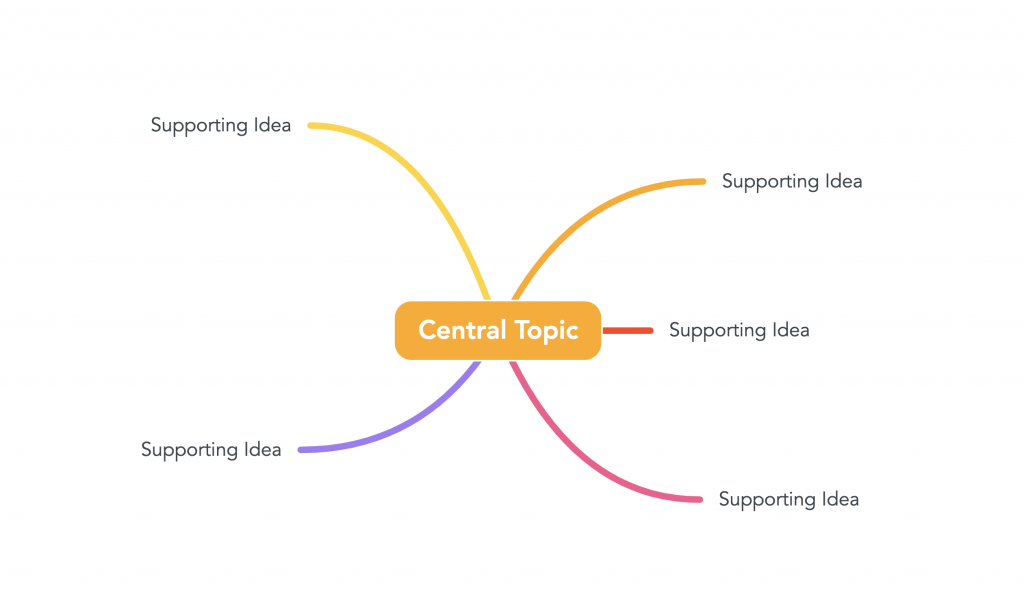
What is Mind Mapping?
Mind maps provide a structured way to capture and organize ideas and information. They help users to understand concepts by breaking them down into their component parts. The technique is used to develop new ideas, or to break down and better understand existing information.
Whether developing new ideas or organizing existing information, mind maps help you see how information fits together. Mind maps provide an expansive and flexible structure to support your thinking.
Key Characteristics of Mind Maps
Single Central Topic
Unlike other visual diagrams, a mind map is built around a single central topic. All the information on your map is “anchored” to the same start point. By placing the main idea at the center, it’s easier for others to understand the core focus of the mind map.
Expansive Tree Structure
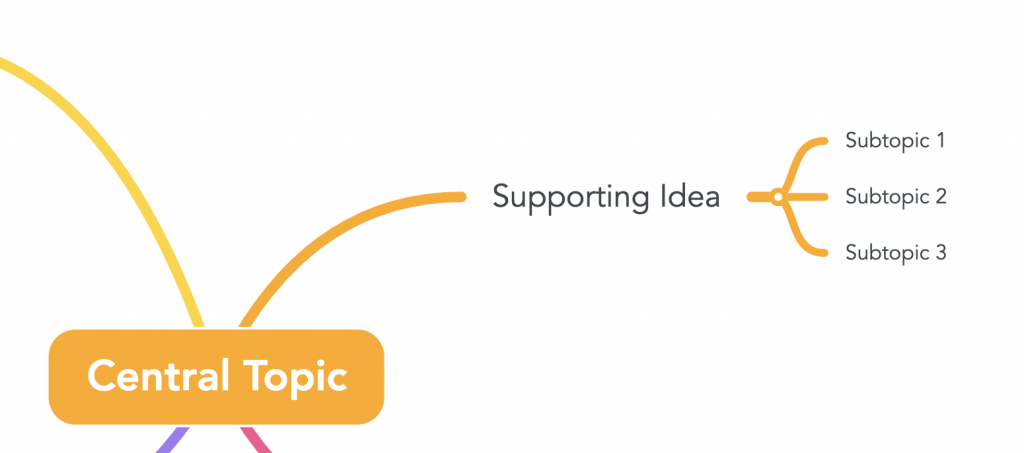
Tree-like branches make up a mind map. They can expand and grow as you develop your ideas. Each branch shows information organized as topics and subtopics, based on categorizations and connections identified by the map creator. The result is a structured hierarchy of information at all levels of the mind map.
Keyword Focused
Keywords, rather than long sentences or blocks of text, make up a mind map. Topics on a map branch often include one or two words that best represent an idea or piece of information. This makes it easier for readers to scan the information presented without having to read an excessive amount of text.
How does mind mapping help?
Whether you’re mapping by hand or using a mind mapping software tool, there are three key ways mind mapping helps develop and organize ideas and information:
Simplification
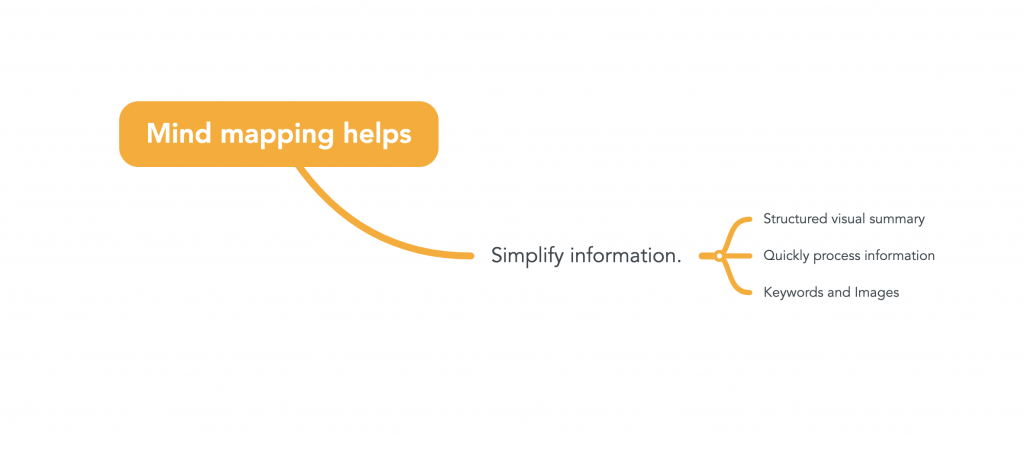
Mind maps help to simplify any information on a page because they are composed of keywords (rather than long sentences). Distilling knowledge into keywords and short triggers creates a structured visual summary that is easier and faster to process.
Categorization
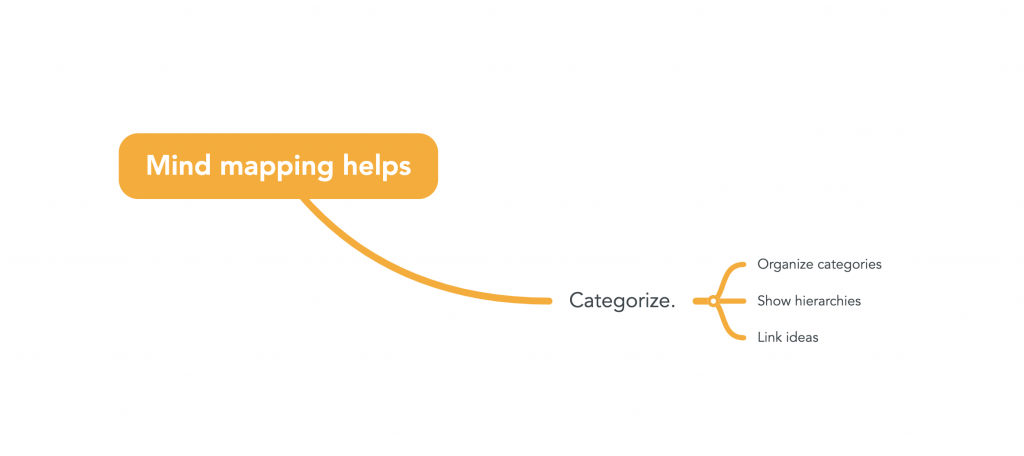
A mind map structure helps you to categorize and sub-categorize information in a way that makes it easier to understand and navigate. Categorization helps our brains to make sense of complexity. And mind maps provide a hierarchical category structure that helps us navigate information more easily. It’s like moving around the aisles in a supermarket to find the particular product we need.
Contextualization
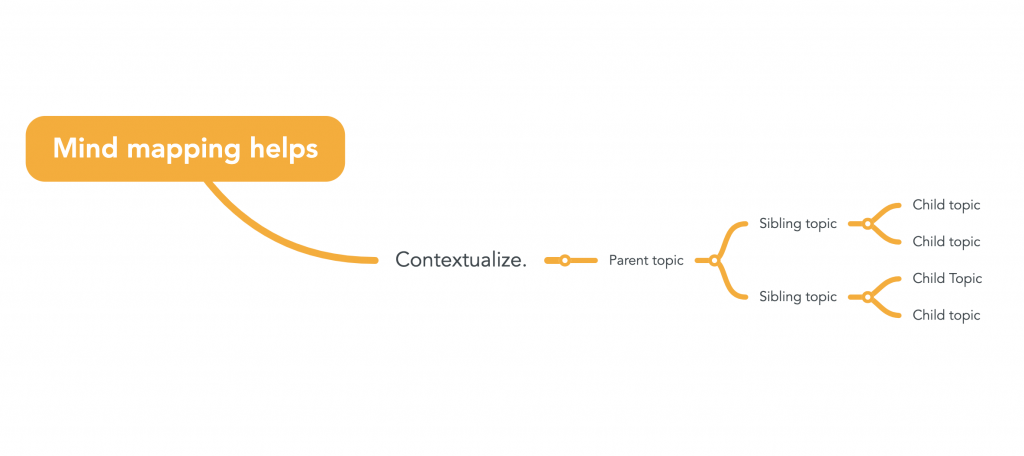
The tree-structure of a mind map means that every piece of information connects to at least one other piece of information. Connections include a higher level (parent) topic, and potentially the same level (siblings) topics, or lower-level (child) topics.
Every item has context because of what it is attached to, and what connects to it. With mind maps, the information doesn’t exist in isolation. You can see how ideas and information relate to each other more clearly.
Who uses mind mapping?
Mind mapping is used by people in business, education, government, the charity sector, and at home.
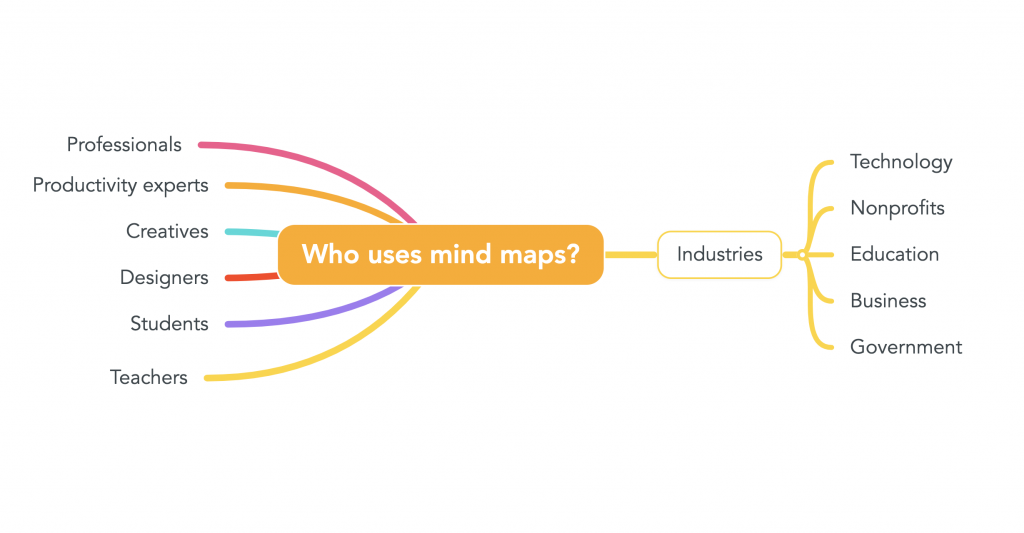
In business, people use mind mapping for project planning, strategic thinking, and managing meetings. Mind mapping software helps teams to develop their ideas more collaboratively. Online mapping allows people to build off each other’s ideas and develop a shared understanding of a situation. It can also break down complex projects into more manageable parts.
In education, students of all ages use mind maps for note taking, summarizing subject information, and planning written assignments. Educators are using mind maps for lesson planning, innovative homework assignments, and group exercises in the classroom.
Outside of these fields, many individuals use mind maps to help with their organization and future planning. People often use mind maps to plan their weeks, their goals, and their careers.
What is mind mapping software?
Some people prefer to mind map by hand using pen and paper, flipcharts, whiteboards, etc. Others prefer to map using computer software or apps on mobile devices. These applications provide powerful benefits when mind mapping, as they overcome the physical limitations of pen and paper.
Additionally, online mapping enables you to build mind maps that can connect with other information sources such as documents or websites. This can allow you to develop your mind map on an ongoing basis.
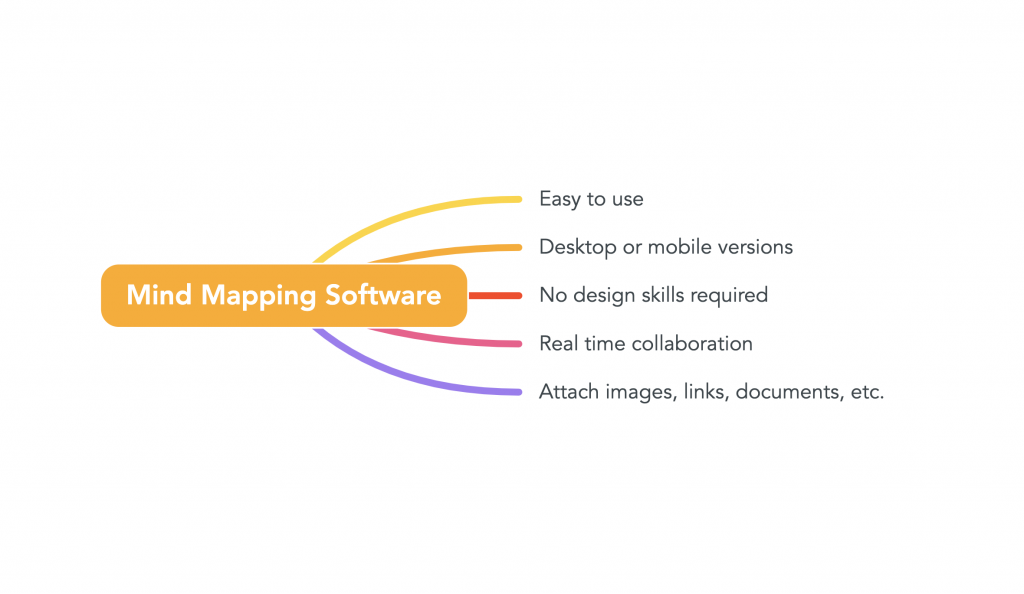
There is mind mapping software that requires installation and can be used without an internet connection. Other software is based entirely online, so you can access and work on your maps from any device with an internet connection. Some online mind mapping tools have the added benefit of enabling real time collaboration with other people in the same mind map.
